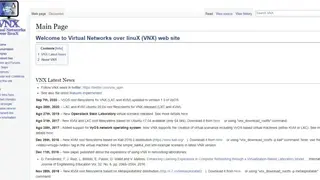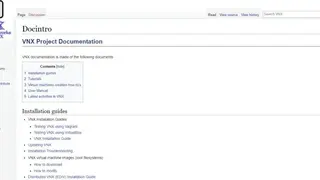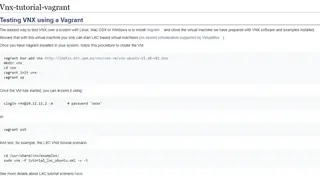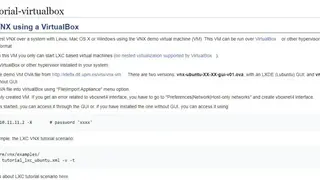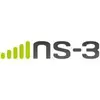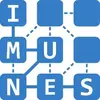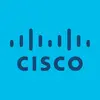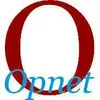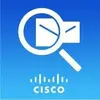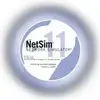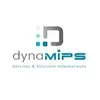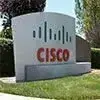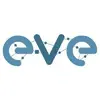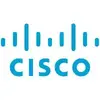
VNX
VNX is a simple, fast, and highly effective virtualization tool developed to assist you in creating virtual network testbeds automatically, resulting in time-saving. You can use it to assign the definition and deploy network scenarios automatically created using different types of virtual machines like Dynamips, or olive routers, Linux, FreeBSD, and Microsoft Windows, linked through a user-defined topology that may be linked to external networks.
Development on VNX has been done by the Engineering Department of the Technical University of Madrid. It is a great solution for testing network services/applications over sophisticated testbeds composed of several virtual networks and nodes. It is also ideal for developing complex network laboratories to empower students to engage with real-world network scenarios. Many other tools like Marionnet, GNS3, MLN, or NetKit aim to develop virtual network scenarios, but this is not how it works.
Instead of the mentioned approach, it delivers a method for managing testbeds, preventing the management and investment complexity required for creation through actual equipment. This tool is composed of two major components, including a VNX program that is responsible for parsing the description of the scenario and creating and handling the virtual scenario on top of a Linux Machine. The second module is an XML language that makes it possible to detail the virtual network scenario.
VNX Alternatives
#1 Ns-3
Ns-3 is a state-of-the-art, multi-featured, and prominent discrete-event network simulator for Internet systems that are developed to be useful for educational and research use. It is open-source and comes with detailed and descriptive documentation to enlighten you about its multiple functionalities. The license under which it is released is the GNU GPLv2 License and is updated and looked after by a passionate community of developers from different locations worldwide.
In the education sector, the simulator is used for the purpose of networking education. It is constantly used as courseware for labs in graduate and undergraduate studies. Students get the opportunity to find how things work in the back and can develop practical skills for use in the real world. Institutions or universities that use the simulator for educational needs include Queen’s University, Indian Institute of Technology Bombay, Northeastern University, and Georgia Tech.
#2 FlexSim
FlexSim is a high-profile and fast 3D Simulation Modelling and Analysis Solution that serves the need of various industries like Warehousing, Manufacturing, Healthcare, and Material Handling. It helps organizations comprehend and enhance the process or system. It assists in elevating the present data into precise prediction.
The software provides a Risk-Free Virtual Environment that empowers you to create a fast-paced computer model based on the system and check several scenarios to check if they are compatible with the real world. You can initiate Analysis Beyond Spreadsheets to enhance past, static analysis. It records variability, time, space, and sophisticated associations within your infrastructure. The built-in visually appealing visuals and 3D environment make it easy for you to actually visualize what’s going on behind the scenes. FlexSim is used by some of the world’s top companies and enables them to save time, effort, and money.
#3 Paessler Multi Server Simulator
Paessler Multi Server Simulator is inexpensive and robust software that helps you power massive-scale testing. It is specifically developed testing needs and is capable of simulating huge virtual DNS, HTTP, SMTP, or FTP server networks, and this also applies to SNMP-based network switches that utilize a simple Windows PC.
The software is perfect for the determination and examination of network texting and network management tools. You can use any typical Windows Desktop to create big virtual networks via the Multi-Server Simulators. Businesses and Professionals or any type of user can build the required number of virtual switches and servers they deem fit, restricted to only the amount of IP addresses that can be used.
The supported virtual devices types include Simple, DNS, SNMP, SMTP, HTTP, and FTP server. The best feature is that you can ready a network of dozens of servers and 20 switches in little time. This is much better than customizing and installing a server solution on any standard PC. Another unique highlight of the utility is that it will explore all the IP addresses present on the local system. You can add any virtual server by choosing the IP address and selecting any of the protocol buttons.
#4 Cisco Modeling Labs Personal
Cisco Modeling Labs Personal is a detailed and high-quality orchestration and network visualization platform that enables aspiring students to get ready for their next Cisco certification exam. You can solve different types of exams like Associate, Expert, or Professional certification. It helps every individual in building highly precise network simulations in a secure virtual workflow.
The platform makes use of authentic and genuine Cisco iOS images, which is the exact same solution used in switches and routers. This offers you a simulation tool with trusted methods that comes in handy while getting ready for the upcoming certification test or writing automation code for the job. By using the platform, you will have the ability to begin and check packet captures directly from the User Interface, build models and what-if situations of real-world networks, and insert nodes and modify links in an active network simulation. It supports different Cisco images like ASAv, IOSv, IOSvL2, IOS XRv, and IOS XRv 9000.
#5 IMUNES
IMUNES is a cost-effective and efficient Integrated Multiprotocol Network Simulator/Emulator that functions as a tool for Linux and FreeBSD. You can consider it as a real-world network topology simulation/emulation framework modeled after the Linux and FreeBSD OS separated in different lightweight virtual nodes that you can easily link by means of kernel-level links for the purpose of creation of complex top-level network topologies. The solution delivers many features, which makes it the top-notch choice among competitor tools. One of these includes 100s to 1000s of virtual nodes in a single physical system, in which every node can run UNIX applications that haven’t been tampered with.
It has an extensible architecture for professional massive scale experiments. You can use the Graphical User Interface for the purpose of customization, management place, link creation, and automated node. The software is lightweight and enables the quick and hassle-free instantiation of portable experiments. The current applications of the tool include the General-use network testbed utilized for Ericsson Nikola Tesla product testing. It uses various technologies like Open vSwitch, Docker, Netgraph, and jails to offer a fast and smooth experience for everyone.
#6 Cisco VIRL
Cisco VIRL is a next-gen network virtualization and orchestration platform that enables you to accomplish multiple tasks like creating and customizing simulated networks with third-party and Cisco objects by means of a graphical utility. You can mark attributes on individual network properties or network topologies. Individuals can reproduce switch and router configurations along with visual works of network designs that demonstrate a large number of elements like BGP configurations, Layer-2 connectivity, IGP configurations, and IP address. You can initiate and stop a simulation whenever necessary with a single click.
The userbase can engage with running simulations like the option to access simulated nodes through console connections, adjust initiated configurations and retrieve configurations for use in the next simulations for migration to authentic routers. Connect external networks with network simulators for the purpose of data-plane, management, and control connectivity. The platform supports several virtualized objects like Ubuntu 14.04 LTS server, Cisco NX-OSv, Cisco ASAc, Cisco IOSv, and Cisco IOS XRv.
#7 QualNet Network Simulator
QualNet Network Simulator is a fine-tuned solution for network planners, scientists, and engineers, empowering them to build virtual models of every data type, video network, and voice that replicates the behavior of an authentic communications network. Simulation is currently the best method for managing, developing, and deploying network-centric solutions for the whole lifecycle.
Users can determine the exact behavior of the network and run network combinations features that can work. The network simulator solution gives you access to a sophisticated environment for building protocols, creating, and running network scenarios, and checking the output results. One of the key features is Speed, which lets it sustain real-time speed, making it easy for network designers and model developers to power several “what-if” analyses by different traffic, model, network attributes in minimal time.
The simulator has the ability to model dozens of nodes by leveraging the next-gen hardware and parallel computing ways. You can power it on multi-processor, cluster, and multi-core systems for the purpose of modeling massive systems with top fidelity. You can connect the system to other software and hardware apps like original networks, OneSAF Testbed Baseline, and different visualization solutions developed by third parties. Lastly, QualNet is bundled with various tools like the QualNet File Editor, QualNet Architect, QualNet Analyzer, and QualNet Packet Tracer.
#8 Mininet
Mininet is a robust and inexpensive Instant Virtual Network designed to function on standard PCs like Laptops and Desktops. The solution is programmed to build a realistic virtual network that is powering up the authentic kernel, application, and switch code on one system like native or cloud, and VM in record time with only a single command execution.
You can easily engage with your network by making use of the Mininet CLI, configuring various aspects, giving access to it to others, or deploying it on the desired hardware. The solution can be used for research, development, and testing. It is the best method for developing, sharing, and testing with SDN machines by means of P4 and OpenFlow. Mininet is maintained and looked after by a passionate community of developers. It is licensed as per the terms of the BSD license. Anyone from the world with adequate knowledge of development can contribute to it.
#9 Cloonix
Cloonix is an open-source virtual network creation framework based on KVM licensed under the AGPLv3 license. You can use it for multiple types of purposes, like educational or practical. The solution is maintained and supported by an active community of developers. You can create as many networks of KVM virtual machines without restrictions. It is high-performance and is developed using prominent languages and technologies like Shell and C. It provides a user-friendly Graphical user interface through which you can create the virtual network without hassle.
#10 Actran
Actran is a state-of-the-art and highly-efficient acoustic simulation software that enables everyone to enhance the acoustic performance of their models with great ease. It is utilized by prominent manufacturers worldwide. You can use it to solve problems related to aero-acoustics, acoustics, and vibro-acoustics. Engineers in different companies like defines, aerospace, automotive, and consumer product use it to comprehend and level up the results of their designs. It offers you a resourceful library of material modes, along with a full element repository composed of infinite attributes and high-performance tools to develop solutions for big problems and an easy, intuitive, configurable Graphical User Interface.
The software is enriched with many great capabilities like extracting acoustic modes, simulating convected and standard acoustics, and analyzing sound radiation. You can also perform an analysis of the sound field in cavities with physical or modal techniques. Apart from these, it is also possible to scan the sound propagation in exhaust lines, ducts, and exhaust lines in automobiles, buildings, and aircraft. The sample applications where it is actively being used include audio systems like musical instruments, telephones, or hearing aids, and sound absorption within passenger compartments of aircraft, cars, and trains.
#11 OPNET
OPNET is a next-gen and highly resourceful network simulator tool that enables engineers and other professionals to simulate the performance and output of any network type. The main point which separates it from other simulators is its robustness and capabilities. You can easily build, manage, and various network topologies. The number of devices and protocols is limited, meaning you cannot develop new protocols or change the behavior of the ones available.
The benefits of the program include an open-source license and a huge amount of project scenarios that provide details on it. The utility can be used in diverse scenarios like Operational validation, Protocol modeling, Application troubleshooting, validating hardware architecture, ad Network design, and planning. It has a discrete event simulation environment that allows you to create traffic, view results, run a simulation, mimic or create new scenarios, and choose statistics.
#12 Common Open Research Emulator (CORE)
Common Open Research Emulator (CORE) is a simple yet robust solution that enables everyone to build their virtual networks. You can use the emulator to create a representation of an authentic computer network that works in real-time and not as a simulation that uses abstract models. You can link the live-running emulation to routers and physical networks. The tool offers the essential functionalities for running exact protocols and applications, leveraging tools offered by the Linux operating system.
The program is commonly utilized for protocol and network research, security studies, platform, and application testing, demonstrations, and increasing the capacity of physical test networks. It is composed of a variety of programming languages to assist with research. Python modules and daemon are focused on the current development. The core functionalities include customizability, centralized control and configuration, scalable and efficient, and simple GUI canvas.
#13 Kathara
Kathara is a high-profile container-based network emulation solution developed by Greek Καθαρά. It is a small-size solution that is based on Docker containers. You can use it for the purpose of demonstrating lessons/demos in real-time, building new network protocols, and testing production networks in a sandbox environment. It contains all the essentials required by Professionals, Academians and is the better alternative to the famous Netkit. Due to this reason, it is cross-compatible and provides the same features and language as Netkit. Kathara is bundled with pre-built images like OpenVSwitch, Quagga, P4, FRRouting, and more, and you can scale it using your own container images as well.
#14 Free SNMP Agent Simulator
Free SNMP Agent Simulator creates a network of up to 100000 SNMP manageable devices on one server. The users can simulate any SNMP centered device with any of the public or private MIBs to run an enormous range of devices configurations with their SNMP management application. It lets users create thousands of traps to simulate disaster states.
SNMP feature includes multiple agents in one box, customized SNMP agent simulation, SNMP agent instance configuration, and extensible environment. It also offers real-time modifiable simulations, configurable SNMP Trap Generation, and recording environment.
SNMP gives a response to MIMIC simulated devices. Each device has its IP address, and the tools can be organized at run-time both on a single and shared basis. The MIMIC discovery wizard can record the production network of users with thousands of real-life devices to simulate them and increase many times. It can accumulate any number of SNMP MIBs at the same time in any order. The Windows, Solaris, Linux, and Amazon cloud are the supported platforms.
#15 GNS3
Graphical Network Simulator3 is open-source software and a network emulator that allows the combination of virtual and real machine devices of almost any description used to simulate composite networks. GNS3 can run on a server VMware ESXi or in the cloud. Users can host topologies on cloud vendors such as Google and Packet net etc.
It is used for education and testing networks before they are placed into production as it offers limitless choices and variations for lab topologies. The users need several components to run recent versions of this software; they need the GNS3 Graphical User interface and virtual machine when using Windows or Mac. They need Cisco IOS images for their labs.
GNS3 has many dynamic communities that help each other with guidelines and tricks for lab issues. The community members also add labs that users can access to studying. With this, professionals can build better networks, make connections, and share ideas.
#16 Cisco Packet Tracer
Cisco Packet Tracer is a software and visual simulation tool that allows users to create network topologies and replicate modern computer networks. By practicing a command-line interface, it will enable the users to configure Cisco routers and switches.
It can work on operating systems like Linux, android 4.2, MS Windows, and iOS 8, etc. It provides visualization, simulation, authoring, evaluation, and association competencies to facilitate teaching and learning of different complicated technology concepts.
The simulation model can provide tables, diagrams, and other visual representations of dynamic data transfer and the development of packet content. By using real-time visuals, users can replace the whiteboards and fixed slides and can decrease presentation time.
One of the prominent features is that it has two workspaces. The logical workspace allows the users to build logical network topologies by connecting network devices, and the physical workspace provides a graphical and physical aspect of the logical network.
#17 NetSim
NetSim is a software, an end-to-end packet level, full-stack, emulator, and simulator. It provides the network engineers a technology development atmosphere for protocol monitoring, network research and development, and military communications.
NetSim Pro version is suitable for commercial enterprise customers and the NetSim standard, and NetSim Academic targets at education customers. Users can check network libraries that show different protocols and technologies. They can also check the emulator to understand how it can be connected to real devices running the live applications.
The users can develop their algorithms or protocol and extend and modify the existing algorithms. Using Simulation API’s, they can create custom protocols. The users also have the option to debug their code and see their variables in sync with simulation.
The external interface allows passing the prompt network data to another tool such as SUMO and MATLAB etc. The software can run its computer engine and sends back information to NetSim, which utilizes this output to transport its network simulation routines.
#18 Dynamips
Dynamips is a computer program that is written in C language to emulate Cisco routers. It allows users to be familiar with Cisco devices, test, and experiment features of Cisco IOS and to check rapidly the configurations deployed on real routers.
To compile Dynamips, you need a working GCC or Clang compiler and CMake build system. You can accumulate two different varieties of Dynamips with this code, and to set the flags, you have to edit the Makefile.
There are two flags that are called stable or unstable. You should prefer the use of a stable flag, although it contains the same code as unstable. But it minuses some mips64 bit optimization and the code that seems to activate instability on several platforms.
The unstable code contains most of the development code and is suitable, especially for 64 bit Mac. It is unstable on other platforms. You can consult your distribution package list to find the similar packages available for most distributions.
#19 Cisco Systems. Inc
Cisco Systems. Inc designs manufacture and sell premium products related to a variety of technologies, crossways security, collaboration, applications, cloud, and IP-based networking. Its technology and products include infrastructure platforms, applications, and security, etc. The cloud-based services based on UCS (Unified Computing System) that provides for hosted versions.
The category of security products includes combined threat management products and advance threat security products of the enterprise. It also offers software that exploits the core network and data center on delivering the functions. And infrastructure category contains its core networking technologies of routing, switching, wireless, and data-centered products.
It also offers to sell networking hardware, telecommunications equipment, and other high-tech products and services. Cisco Systems. Inc compromises some technical support and advanced functions for transporting voice, video, and data across campuses and worldwide. It is providing VoIP services to enterprises, home users, and cable service operators. With skype and yahoo partnership, it integrates consumer VoIP services with cordless phones and wireless.
#20 Virtual PC Simulator
Virtual PC Simulator is an open-source software running on Linux and Windows, where only limited network commands can be used. It is an ideal tool to use in simulated networks such as GNS3 as it has developed from a simple to a robust testing ACLs tool. Because of the detailed output of ping replies and commands such as to see packet dumps, etc., made it a toolkit for the networking engineers.
Virtual PC Simulator simulates up to 9 PCs, and it is more useful than traditional PCs because it can send and receive UDP and TCP pings. From the virtual PCs, you can ping or trace out the other routers or hosts when you learn the Cisco routers in the Dynamips. It can substitute the routers or VMware boxes used as PCs in the Dynamips network.
When it starts, it attends the ports from 2000 to 2008 and delays the dynamips to connect and sends the packets to the ports from 3000 to 3008, which would be accompanied by the dynamips.
#21 GENESIS Neural Simulator
GENESIS Neural Simulator is a simulation to build accurate models of neural systems. It is used in matching supercomputers to simulate networks that comprise millions of multi-compartmental neurons. The software can model more intangible networks. Generally, it can be used both in realistic modeling of the nervous system as an instructional tool and for neurobiological study, which is a simulation-based tool.
GENESIS builds from modules that receive inputs, makes some calculations on the data, produces output as its simulator design, and the interface is based on building block approach.
It uses simulation language to construct neurons and their networks. A specific simulation is set up by writing a series of commands in the scripting language that generates the model itself and graphical interface in a particular simulation. Its version PGENESIS is the first wide-scale modeling system in computational biology to inspire developers to share model features and components.
#22 Router Configuration Generator Tool
Router Configuration Generator is an open-source application to use as an extension for GNS3 that spontaneously creates the configuration of all Cisco network equipment, which is part of the virtual topology. Through topology setup configuration files produced by GNS3 provides nodes like switches and routers without opening their matching consoles.
It provides you a standard that which configuration should be applied as it includes customized settings such as the routing protocol etc. To integrate with GNS3 and to run this tool, there are two requirements to work with this application on Windows that is GNS3 (latest version) sources files and the Latest version of rcg-tool.
You can generate a tool menu button by following two easy steps that also include gns3-GUI (main_window.py). Before constructing GNS3’s GUI, it will ask you to make some changes in the folders that need to be done, after which the GNS3 should build good and run rcg-tool.
#23 Live Raizo – Linux Distro for Networks
Live Raizo is open-source software and a live distribution based on a virtual Linux machine called Debian that comprises various network tools and services. It also includes tools to interrelate with real devices such as Wireshark and minicom, as well as SSH, HTTP, and TFTP servers.
Its core features allow you to build a complex virtual network with drag and drop options. You can link with hubs or switches and utilize server or router as a client because you have simulated machines based upon Debian. You can introduce your OS if it is compatible with Linux, Microsoft, and ASA Firewall. You can connect your simulated network with the physical system using drag and drop options.
Many network tools are already available on Debian VMS, and it allows you to install tools you need like Linux / Debian, etc. You can also modify LiveRaizo with remote scripts that emerged on a server. A minimal window manager increases the memory of the CPU for the virtualization.
#24 Agent.GUI
Agent.GUI is a structure to address the use of Multi-agent based simulations (MABS) and Multi-agent systems (MAS) for end-users of diverse domains. MAS is a computerized system of multiple interrelating agents. It can resolve severe problems that are impossible for an individual agent to solve.
It provides a Graphical User Interface that can be stretched by the developers to address the requirements of economists, engineers, and computer experts. It is developed in JAVA that enables the developers to constitute more dominant software tools than building them from the base. The numerous tools combined in its solution provide powerful agent technology to its framework.
Agent.GUI offers a console window to developers which permits to exhibit the system output, even if the output comes from the different machine located at some remote area. The core program feature includes the developer can add external libraries to a project. To describe, start arguments for agents, it provides access to the developers to integrate protégé designed ontologies into the plans.
#25 Eve-NG
Eve-NG is a high-performance emulated virtual environment designed from scratch to fulfill the needs of DevOps, Network, and Security Professionals. It consists of all the features required by modern-day IT staff. The comprehensive feature set makes it the perfect fit for group collaborators, enterprises, individuals, and e-learning centers/providers. What makes it shine is that it is the first clientless multivendor network emulation solution that enables security and network professionals with lots of openings in the world of networking. It has two editions, namely the Community and Professional Edition. The key features include Multiuser, KVM HW acceleration, simultaneous lab instance, Memory optimization, Labs xml file format, Import/export configuration, and the option to instantly transpose real network to virtualization.
#26 VR Network Lab
VR Network Lab is a versatile and open-source solution that enables you to run virtual routers with Docker. The purpose is to empower comfortable Labbing, testing, and development. It is developed and maintained by Deutsche Telekom as a member of an automated CI environment to allow for the testing of its network provisioning system. The best feature is its support for a wide range of software routers like Nokia VSR, Arisota vEOS, Juniper vQFX, Cisco XRv 9000, Juniper vMX, and Cisco XRv. Organizations can select the router that works best for them with great ease.
#27 Cisco CCIE Lab Builder
Cisco CCIE Lab Builder is a simple yet robust solution that gives you the tools to build, sustain, and archive network topologies of switches and virtual networks. It is the best tool for learners searching for a faster way for generating network topologies in real-time. The software runs virtual devices remotely in the back, empowering students to link to the devices’ remote console by using telnet. Students get the features and functionalities they need to create the desired network topologies and concentrate on the Cisco iOS devices’ configurations and consoles. Lastly, everything related to logistics is handled beforehand, enabling you to do the required work without hassle.
